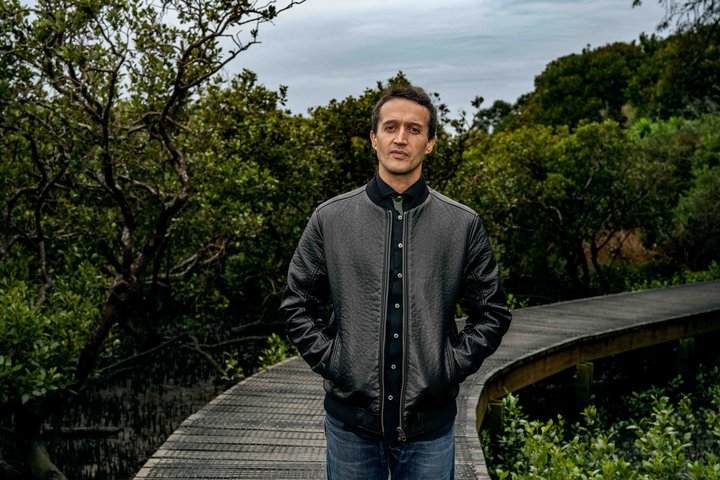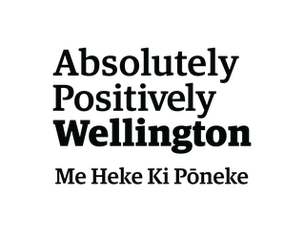26 June 2025
Conceived by renowned Māori choreographer Moss Te Ururangi Patterson (Ngāti Tūwharetoa), Chief Executive and Artistic Director of The New Zealand Dance Company, Home, Land and Sea is a new ballet for six dancers from the Royal New Zealand Ballet and six from the New Zealand Dance Company.
The work is a poetic response to Aotearoa’s complex history, our evolving national identity, and the ongoing search for belonging. Set to an original score by New Zealand composer Shayne P Carter, Home, Land and Sea draws on the elemental relationship between land and sea to explore the tensions, grief, and beauty that lie at the heart of our shared story.
On a sunny Friday, Moss and I took a pair of long blacks to the park and settled in to talk about his new show, collaboration and what makes Aotearoa dance unique.

My first question was about what audiences can expect from Home, Land and Sea. Moss’s answer was unusually succinct, “They’re going to see a new piece of work. New from me, in which I can speak to something different.”
I probed a little deeper, asking in what way this work is different.
“It’s different in that you’ll see my particular movement, Shayne’s particular style of making music. I’ve made works with the ballet before, but they’ve all been shorter. This one will be getting close to full-length.”
Reflecting on the development of the work, he said “It’s been wonderful working with my good mate, Shayne, who comes from an era of my childhood that speaks about being defiant. Being solid about who you are and uncompromising about it. People are going to see that.”
Moss explained the genesis of the piece , about how the germ of an idea from his Arts Laureate sponsor, Adrian Burr, seeded what then became Home, Land and Sea.
“He wanted me to go and research some artefacts at the British Museum and the Halsey Institute in London - some musical sections that were captured on the Endeavour from New Zealand in the 1700s. And I thought, wouldn’t it be amazing to make a dance on early perspectives of Aotearoa, and then look at where we are now and do a contrast and compare? Tell a story about where we’ve come from and where we are now. I haven’t managed to get there yet, but Home, Land and Sea came out of that.
“I had a good chat to Shayne then caught up with Ty at the ballet – such a great guy. They were both into it, which was awesome. We’re not using any old scores from the British Museum, but we are using some laments from Tūwharetoa where I’m from, and capturing Shayne’s sound from the Flying Nun era which, to me, is all about defiance and hope.”
Delving further into the creative process, I asked Moss what benefits he has found in working with two different companies.
“The main benefit is that the ballet are just world-class, incredible movement practitioners. As the choreographer, I get to explore that and push the boundaries of what’s possible by bringing together what I believe are some of our best contemporary dancers with our best classical dancers. And to create something that we’ve never seen before.”
He explained that this is both exciting and terrifying, which led me to ask about any challenges he may have faced working with two companies with very different approaches to movement.
“Oh, definitely. We’re [The New Zealand Dance Company] very organic, very low and skilled at doing floor work. We work from a very diverse movement base. My style is very much drawn from the icons of New Zealand dance – Douglas Wright, Michael Parmenter, Ann Dewey, Kilda Northcott, Stephen Bradshaw all those from the Limbs and Taiao period – they were my mentors and teachers. Some of them worked with the ballet too, but as individual practitioners.”
Moss went on to explain that The New Zealand Dance Company has a vision for the future of contemporary dance in Aotearoa, with New Zealand stories, music, and choreography. By working with the ballet, the two companies are looking at building this future together.
“I’m trying to push us forward in directions that challenge us culturally, progressively, and aesthetically. I think it’s important. I think we have to. And people will get freaked out, but we’re shifting into a new frontier.”
Moss reflected, “Most of my work has been centred around Taupō – it’s all about my home, where I’m from, the colours, the landscape, and the aesthetic of that place. This work will have that too, but with Home, Land and Sea, I’m attempting to say something about what’s happening right now in our beautiful country Aotearoa -New Zealand. It’s a mix of discontent, grief and aching nostalgia yet threaded through it is a quiet defiance. There are all these external forces impinging on where we’re travelling to and I just feel I need to say something about hope for the future. Because I believe we could have a hopeful future even if, now, it feels like choppy waters out at sea.”
We moved into talking about music and his collaboration with Shayne P Carter. I was interested to know if music or the movement comes first, or if they develop side by side.
“We’ve done it all different ways. We’ve collaborated a lot. Where I’ve made the dance and he’s made the music. We even did a project where he responded and played live. This time, I wanted to make something before we start. We’re on track for him to create the score in about three weeks, I’ll get into the studio with that score, and we’ll make the dance.”
To finish, I asked Moss what he believes makes dance in Aotearoa unique or special.
He answered, “It’s athletic. It’s circular. It’s raw, uncompromising. It’s able to express the emotional quality of this country. A lot comes from the traditional movement of Te Ao Māori. That style of movement is integrated into my practice. It’s become so much a part of the way we tell stories.”
Home, Land and Sea will be performed at the St James Theatre, Wellington 24-26 July before heading to Auckland (31 July -2 Aug) and Christchurch (8-9 Aug). Tickets are available here.
By Kate Larkindale


